Love is universal, but the way we celebrate it? That’s where the fun begins. Weddings are one of those magical moments that bring people together—and the traditions that surround them are as colorful and diverse as the world itself.
At Remitly, we know many of you bring marriage customs from your home countries and mix them with new ones after moving abroad. That’s part of what makes immigrant weddings in the US so special: they’re not just about two people; they’re about blending families, cultures, and even continents. So, let’s take a tour through wedding traditions around the world.
European wedding traditions: old world charm
Weddings in Europe are like stepping into a history book, with a lot more champagne and dancing. From quirky ceremonial challenges to deeply symbolic wedding rituals, couples there lean on centuries of tradition to celebrate their union.
Germany: The log cutting ceremony
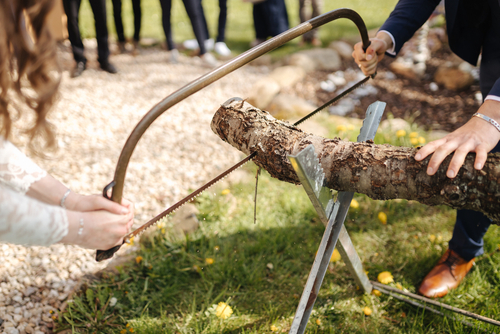
Ever seen a bride and groom grab a giant saw and hack through a log together? In Germany, this is how many couples kick off their marriage. The tradition symbolizes the first challenge they face together.
It might not sound romantic at first, but picture it: the couple laughing, friends cheering them on, maybe a little friendly competition about who’s pulling harder. It’s messy and memorable—a perfect reminder that marriage is all about teamwork.
Greece: The Stefana crown exchange
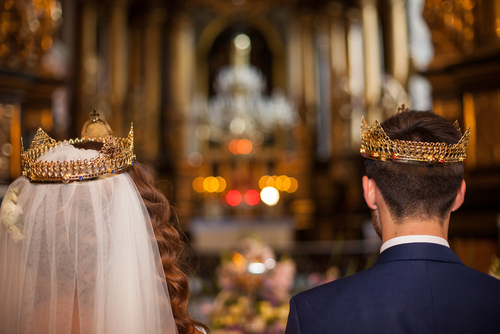
Greek weddings are famous for their beauty and focus on family, but the Stefana crowns take center stage. The crowns are joined by a ribbon and placed on the couple’s heads, then switched three times by a priest. Each exchange represents unity, eternity, and blessing.
The symbolism is clear: two people are now connected, not just to each other but to something greater.
Scotland: Handfasting and tartan traditions
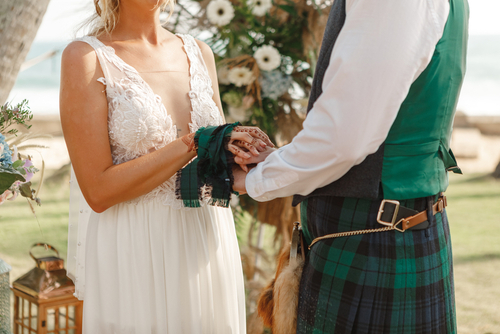
If you’ve ever asked yourself where the phrase “tying the knot” came from, you can thank Scotland. The Celtic custom of handfasting involves binding the couple’s hands with cords or ribbons to symbolize their bond.
Tartan fabrics also play a role. The groom might drape his family tartan over the bride’s shoulders to welcome her into the clan. It’s heartfelt, visual, and a clear nod to the deep sense of heritage that Scottish weddings celebrate.
Asian wedding traditions: harmony and honor
Asian weddings are colorful, symbolic, and often full of rituals that honor both family and community.
China: The tea ceremony
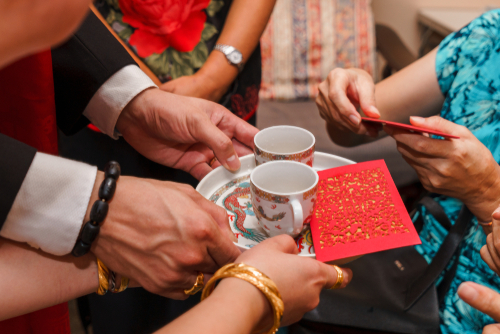
One of the most beloved traditions in China is the tea ceremony. The couple serves tea to parents and elders, kneeling to show respect. In return, they receive blessings, and often red envelopes filled with money or jewelry.
By tapping into tea culture, the couple shows gratitude to their families, and the families symbolically accept the marriage. It’s about respect, but also about connection across generations.
India: Mehndi and the seven sacred steps
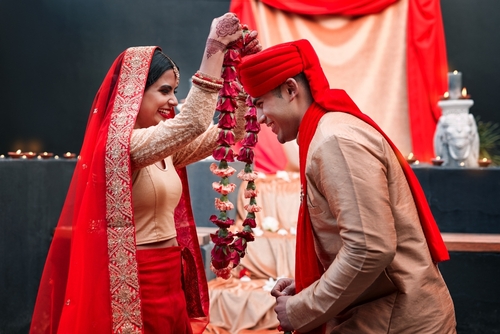
Indian weddings are legendary for their vibrant color, energy, and delicious food. Before the big day, brides and sometimes grooms are adorned with mehndi, which are intricate henna designs said to bring beauty and good luck.
During the ceremony itself, the couple takes seven sacred steps—or “Saptapadi”—around a fire. With each step, they make a vow to love, respect, and cherish each other and their families. It’s a wedding ritual that feels both grounding and celebratory, just like marriage itself.
Japan: San-san-kudo sake ritual
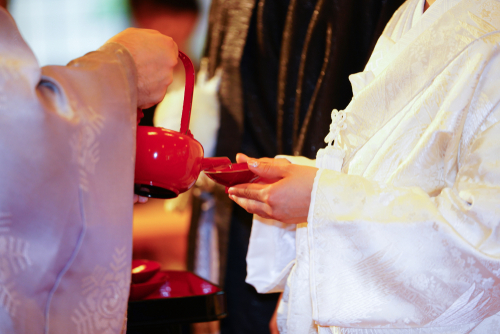
In Japan, the ”san-san-kudo” ritual makes marriage a family affair. The couple drinks three sips each from three sake cups, and sometimes, the parents do too. The repetition of the number three, considered lucky in this culture, represents joy, prosperity, and longevity.
The beauty of this ritual is its balance. It’s formal yet intimate, symbolic yet simple. And for anyone watching, it’s a reminder that marriage ties families together just as much as it does two people.
African wedding traditions: community and heritage
African weddings are colorful, community-driven events that are full of symbolism. They highlight ancestry, family ties, and the joy of coming together.
Ghana: Libation and kola nut ceremonies
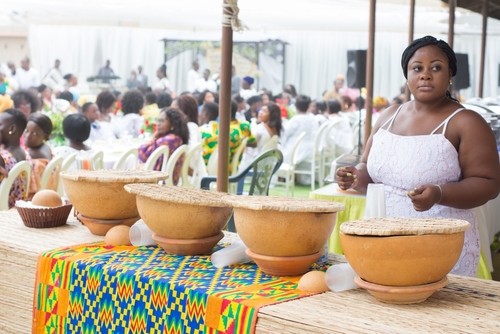
In Ghana, weddings often begin with the pouring of libations. Elders offer alcohol to ancestors, asking for their blessing on the couple’s future. It’s a way of honoring those who came before and inviting them into the celebration.
Another tradition is sharing kola nuts. Their bitter taste represents life’s challenges, while their sweetness represents joy. Together, they symbolize partnership and endurance, to show that marriage is about weathering both the hard and the happy times with loved ones by your side.
Nigeria: Money spraying
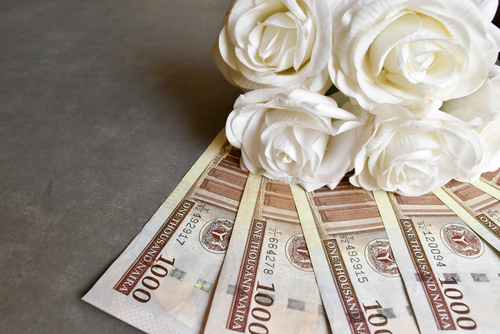
If you want a wedding tradition that’s as fun as it is meaningful, look no further than Nigeria’s money spraying. As the couple dances, guests shower them with cash, literally throwing bills in the air or pinning them to their clothes.
More than just a financial contribution, it’s a public way of wishing the couple prosperity and happiness. Plus, it makes for some incredible dance-floor photos.
South Africa: Jumping the broom
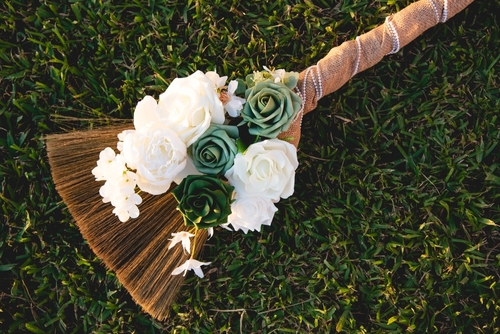
In South Africa, many couples mark the start of their marriage by jumping over a broom together. The broom represents sweeping away the old, while the jump signifies leaping into a new life.
This tradition has traveled across continents, and today, it’s also celebrated in African American weddings.
Arabic wedding traditions: joy and symbolism
Arabic weddings are famous for their energy, music, and powerful rituals.
Lebanon: The zaffe procession
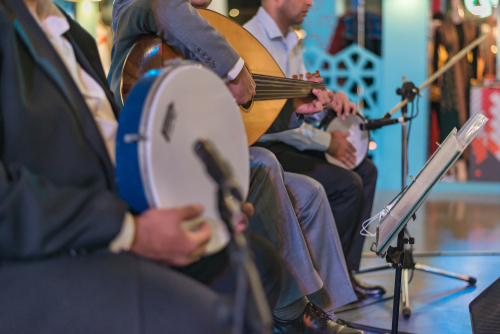
Ever heard drums echoing down the street before a wedding? In Lebanon, that’s the “zaffe”. Musicians, dancers, and singers parade with the couple, building excitement before the ceremony.
The “zaffe” is loud, fun, and unforgettable. It’s a way of announcing a marriage and declaring joy to the whole community. For many, the celebration truly begins here.
Turkey: Henna night
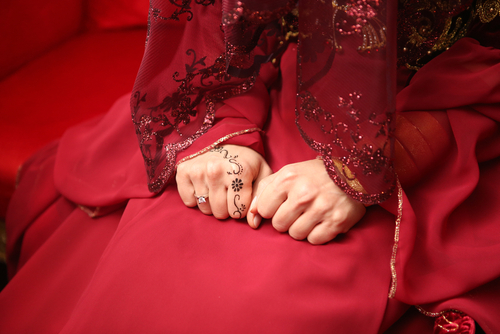
In Turkey, brides gather with friends and family for henna night, or “kina gecesi”. The bride’s hands are decorated with henna during an evening filled with songs and emotional goodbyes to her old life.
The tradition celebrates beauty and protection, while also giving the bride one last night surrounded by her family and peers before starting a new chapter.
Morocco: Ritual baths and wedding dresses
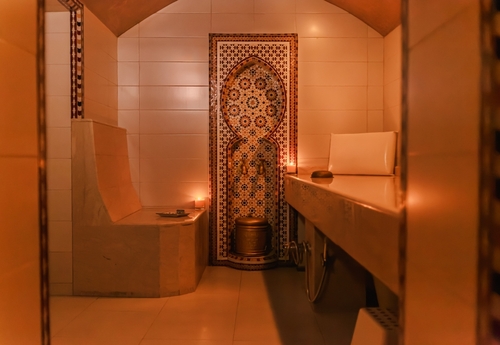
Moroccan brides prepare for their wedding with a hammam bath, a ritual of purification and relaxation. Friends and family often join in, turning it into a joyful pre-wedding gathering.
On the big day, brides may wear multiple dresses, each symbolizing a different blessing: prosperity, fertility, or joy. These elaborate gowns turn the wedding into a fashion show of culture and meaning.
Latin American wedding traditions: faith and family
Latin American weddings blend religious devotion with vibrant cultural celebrations for the whole community.
Mexico: Las arras (wedding coins)
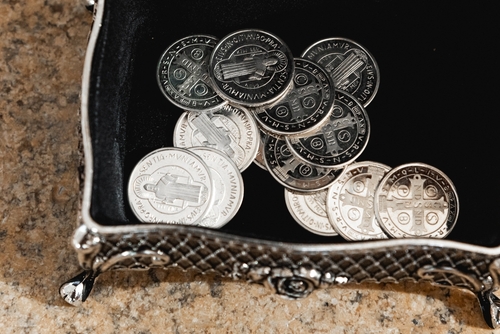
In Mexico, the groom presents the bride with 13 coins—called “arras”—during the ceremony. The coins symbolize prosperity and trust, blessed by a priest before being exchanged.
In giving these coins, the groom promises to share everything with his bride, and she accepts them as a symbol of partnership.
Brazil: Bem casados (wedding sweets)
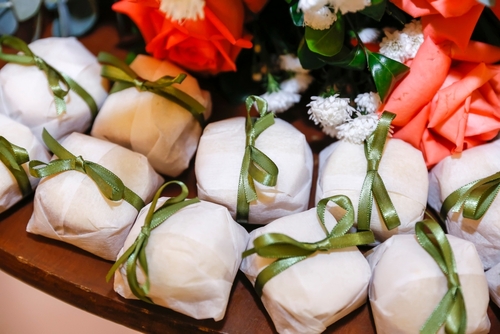
If you’ve ever left a Brazilian wedding, chances are you took home some “bem casados”. These beautifully wrapped little cakes are given to guests as symbols of good luck. The name means “well married,” and biting into one is like sharing in the couple’s sweetness.
Peru: The cake pull
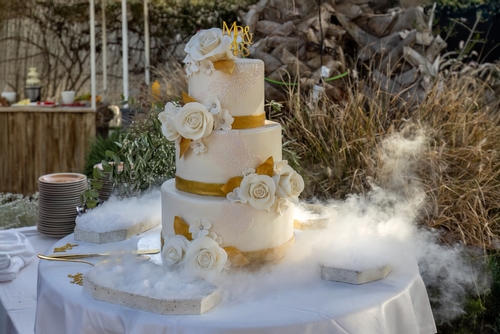
In Peru, wedding cakes sometimes hide ribbons with charms attached. Single women pull the ribbons, and whoever finds the charm representing marriage is said to be next in line. It’s playful, lighthearted, and a fun way to involve guests.
North American wedding traditions: roots and reinvention
North America’s weddings are a mix of long-standing customs and creative reinventions, reflecting the region’s multicultural roots.
United States: Something old, something new
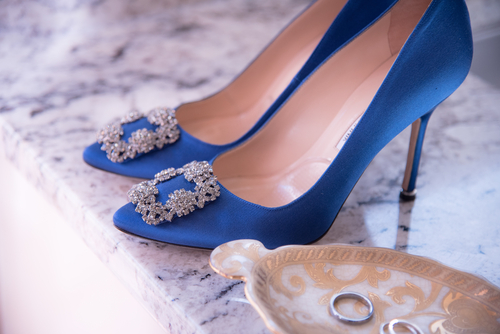
The rhyme “something old, something new, something borrowed, something blue” is still going strong in the US. Brides incorporate these items into the ceremony as tokens of continuity, hope, and love.
What makes this tradition so enduring is its flexibility. It can be sentimental, quirky, or funny, but it’s always personal. Whether you choose to include grandma’s necklace or a pair of blue sneakers, it adds a touch of charm to the day.
Canada: The money dance
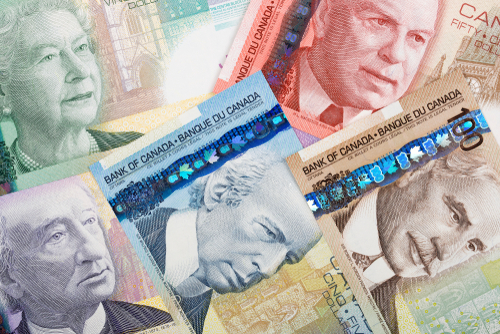
In Canada, some couples include the money dance as part of the ceremony. Guests pin bills onto the bride’s dress or tuck them into a pouch as they take a spin on the dance floor. Not only do the couple receive a financial boost, but guests also get a chance to share a personal moment with the newlyweds.
Indigenous traditions
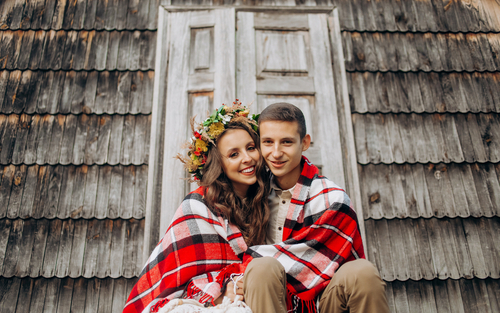
Indigenous communities bring their own deeply meaningful wedding rituals, too. In some cultures, a blanket ceremony wraps the couple together to symbolize unity. Others include a smudging ceremony, where sacred herbs are burned to cleanse and bless the marriage.
These cultural celebrations highlight a connection to nature and spirituality. Their purpose is to highlight that marriage is more than a legal bond—it’s a sacred journey.
Modern twists and timeless themes in weddings
Weddings aren’t frozen in time; they’re living, breathing celebrations that carry unusual superstitions, evolve with new cultures, and still hold onto universal themes.
Superstitions and good luck charms across cultures
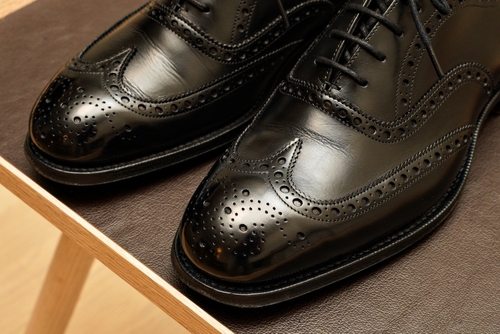
Every culture has its quirks when it comes to luck, protection, and prosperity in marriage.
- In Italy, for example, guests sometimes shout “Evviva gli sposi!”—or “Long live the bride and groom!”—and toss rice at the couple. This tradition is believed to bring fertility and abundance.
- In Egypt, friends and family may drum and sing during a lively procession called “zaar” to chase away negative spirits before the big day.
- In India, the bride’s friends often hide the groom’s shoes, sparking playful bargaining for their return.
- And across Eastern Europe, bread takes center stage as a symbol of abundance and prosperity.
Whether lighthearted or serious, these wedding rituals show just how much people want to set couples up for success.
Blending traditions in immigrant weddings
For immigrants, weddings are often beautiful mashups of cultures. In the US, it’s common to see couples weaving together rituals from their backgrounds: a Mexican-American wedding that combines “las arras” with a Western ring exchange, or a Ghanaian-Indian celebration with both libation pouring and a mehndi night.
These cross-cultural ceremonies are joyful expressions of love thriving across borders. And thanks to technology, even relatives abroad can join international weddings via livestream, proving that community can travel just as far as love does.
Universal themes and modern reinventions
Even as wedding trends change, some things remain constant. Family is always part of the celebration, whether through blessings, symbolic gifts, or heartfelt toasts. Music and dance are staples, from Lebanese drummers to Nigerian DJs. And of course, food anchors everything, because no marriage ceremony is complete without a feast.
At the same time, these cultural celebrations are evolving. Some couples choose eco-friendly touches like planting trees or skipping paper invitations. Others plan destination weddings that feel like adventures. Inclusive unions are rewriting old traditions in ways that reflect today’s values. Yet through all these changes, the heartbeat stays the same: love, unity, and celebration.
Celebrating unity through diversity
From sawing logs in Germany to releasing doves in the Philippines, wedding traditions around the world are as diverse as they are meaningful. Each one reflects the values of love, family, and community.
For immigrants, these customs often feel especially powerful. They’re a way to honor where we come from while embracing where we are now. No matter the language or culture, weddings remind us that love truly knows no borders.
How Do National Flowers Influence Wedding Traditions Around the World?
National flowers are integral to wedding traditions worldwide, symbolizing love, unity, and cultural heritage. In many countries, national flower exploration during wedding planning adds a unique touch, as couples incorporate these blooms into arrangements and ceremonies, celebrating their roots and connecting with nature’s beauty on their special day.
FAQ
What is the most common wedding tradition worldwide?
Exchanging rings and other symbolic binding rituals show up in countless cultures, making it one of the most universal customs.
How can couples honor multiple cultural backgrounds in their wedding?
Pick the rituals that mean the most to you as a couple and explain them to guests. Blending traditions makes the day feel unique while honoring both families.
Are there wedding traditions that are considered universal?
Yes. Family blessings, music, dancing, and feasting are almost always part of the celebration, no matter the culture.
How have modern weddings changed traditional ceremonies?
Modern couples are livestreaming their weddings, going green with eco-friendly practices, and creating inclusive traditions that reflect today’s values.
What should I know before attending a wedding from a different culture?
Be open and curious. If you’re unsure about something, ask politely or follow the family’s lead. Most couples love it when guests take an interest in their traditions.